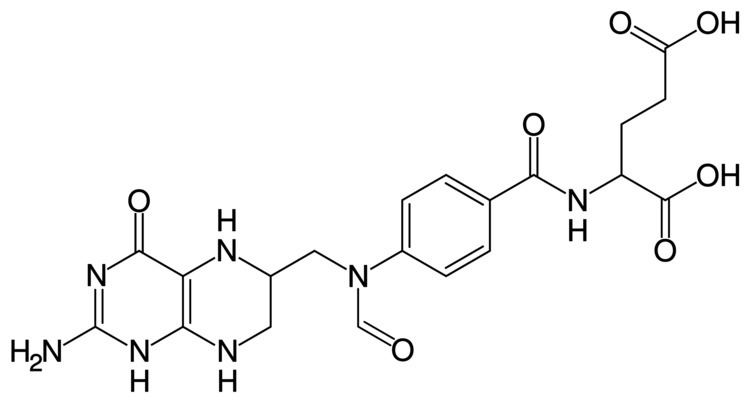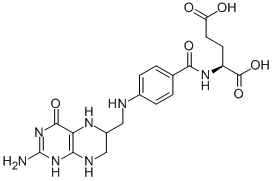Formula C19H23N7O6 | Molar mass 445.43 g/mol | |
 | ||
Fujiya miyagi tetrahydrofolic acid
Tetrahydrofolic acid, or tetrahydrofolate, is a folic acid derivative.
Contents
Fujiya miyagi tetrahydrofolic acid
Human synthesis
It is produced from dihydrofolic acid by dihydrofolate reductase. This reaction is inhibited by methotrexate.
It is converted into 5,10-methylenetetrahydrofolate by serine hydroxymethyltransferase.
Bacterial synthesis

Many bacteria use dihydropteroate synthetase to produce dihydropteroate, a molecule without function in humans. This makes it a useful target for sulfonamide antibiotics, which compete with the PABA precursor.
Functions

Tetrahydrofolic acid is a cofactor in many reactions, especially in the synthesis (or anabolism) of amino acids and nucleic acids. It acts as a donor of a group with one carbon atom. It gets this carbon atom by sequestering formaldehyde produced in other processes. A shortage in tetrahydrofolic acid (FH4) can cause megaloblastic anemia.

Methotrexate acts on dihydrofolate reductase, like pyrimethamine or trimethoprim, as an inhibitor and thus reduces the amount of tetrahydrofolate made. This may result in megaloblastic anemia.
Tetrahydrofolic acid is involved in the conversion of formiminoglutamic acid to glutamic acid; this may reduce the amount of histidine available for decarboxylation and protein synthesis, and hence the urinary histamine and formiminoglutamic acid may be decreased.
